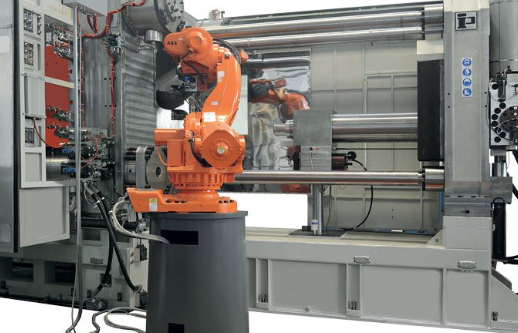The standard coefficient table for Die Casting size design is a reference tool used to guide Die Casting design. When designing stamping molds, it is necessary to consider factors such as material performance, process requirements, and product requirements, among which size design is a very important part. The quality of size design directly affects the service life, production efficiency, and product quality of the mold. The standard coefficient table for size design of Die Castings is a standardized method summarized based on the characteristics and experience of stamping processes. Today, we’re going to tell you how to choose appropriate materials and sizes to meet the requirements of the product.

The Standard Coefficient Table for Die Casting Size Design Usually Includes the Following Aspects:
1. Standard coefficient table for punching die size design: mainly includes dimensions such as the number of pieces, diameter, spacing, radius, and height of the punching die. The selection of these sizes should be based on the accuracy and stability of punching.
2. Standard coefficient table for lower mold size design: mainly including the height, width, length, and support structure of the lower mold. The selection of these dimensions should consider the firmness and stability of the mold to ensure that the mold will not deform or crack during the stamping process.
3. Table of standard coefficients for punch size design: mainly includes dimensions such as height, diameter, radius, and spacing of the punch. The selection of these dimensions should take into account the strength and deformation of the material to ensure that the punch can work properly and meet the requirements of the product.
4. Standard coefficient table for spring size design: mainly includes dimensions such as spring diameter, length, and elastic coefficient. The selection of these dimensions should take into account the load and deformation of the projectile to ensure that it can provide sufficient pressure and maintain a stable working state.
The formulation of the standard coefficient table for Die Casting size design needs to be determined based on specific stamping processes and product requirements, and different products and processes may have different size design requirements. Therefore, when designing molds, designers need to select appropriate coefficient tables based on the actual situation, and adjust and optimize the dimensions accordingly to meet the requirements of the product. At the same time, mold designers also need to have certain experience and professional knowledge to have a reasonable grasp and adjustment of size design.
Types of Material Dimensions for Die Castings
The common dimensions of Die Casting materials include thickness, length, width, and aperture. Among them, thickness is the basic parameter of the mold. Due to factors such as wear and fatigue during use, thickness is an important guarantee for the lifespan and quality of the mold. The length and width are selected based on the size of the stamped parts. After selecting the thickness, selecting the appropriate length and width can ensure the reasonable layout and production efficiency of the stamped parts. Aperture refers to the size of the holes in the mold, which also needs to be selected according to the requirements of the stamped parts.
How to Choose the Appropriate Material Size
Choosing the correct size of Die Casting materials can effectively improve production efficiency and reduce production costs. Firstly, appropriate thickness, length, and width should be selected based on the size and requirements of the stamped parts, and then materials with good wear resistance, strength, and toughness should be selected based on the product’s usage environment and requirements. Normally, carbon steel can meet the requirements of most stamping parts, but for some products with high requirements, such as automobiles and electrical appliances, it is necessary to choose materials with high corrosion resistance and strength, such as stainless steel or aluminum alloy. In addition, it is necessary to choose the appropriate aperture according to the specific situation to ensure the service life and quality of the mold.
Precautions
When selecting the material size of the Die Casting, it is also necessary to pay attention to the following points. Firstly, it is necessary to develop a reasonable mold design plan based on production needs to avoid wasting materials and increasing production costs. Secondly, it is necessary to select appropriate materials and sizes based on the usage environment and requirements of the die casting mold avoid damage or shortened service life of the mold due to improper material selection. Finally, it is necessary to choose a suitable maintenance method and cycle based on the actual situation of the mold. Regular inspection and repair of the mold can extend its service life and improve its quality.
Reasonable selection of Die Casting material size can effectively improve production efficiency and reduce production costs, while also ensuring product quality and lifespan. When selecting the size of Die Casting materials, it is necessary to choose appropriate materials and sizes based on the size, requirements, and usage environment of the stamping parts, and pay attention to developing a reasonable mold design plan and regularly inspecting and repairing the mold to ensure the service life and quality of the Die Casting.

